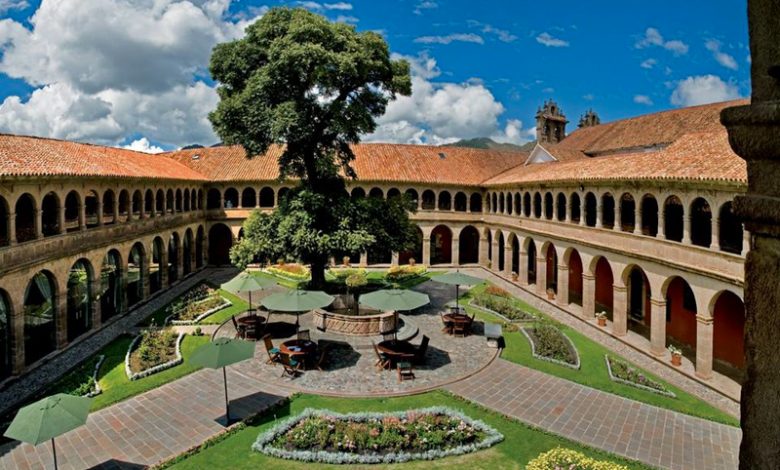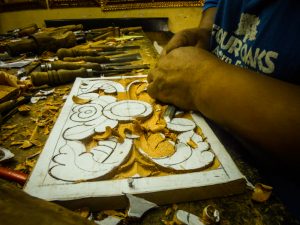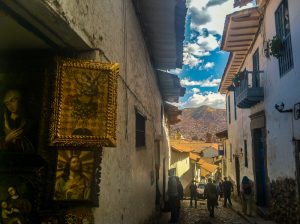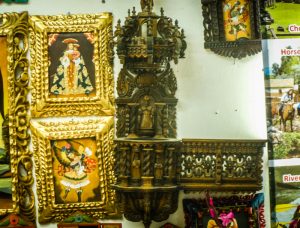Andean Cedar, An Important Tree of Cuzco.

Before the Spanish came, the Valley of Cuzco was filled with trees, especially the Andean cedar. The air was clean and the rivers flowed fresh. Times were very different.
The Spaniards eliminated the forests of the very aromatic Andean cedar. They were used to build homes and temples. Today there is only one Andean cedar left in the city where there once were large stands. More than 300 years old, the remaining cedar rises from the patio of the Hotel Monasterios. Its branches and leaves keep alive the memory of those times, shortly after the Spanish invasion in the scent that it lets off. It take you to the magical valley of the past.

The Andean cedar, called atok mallqui in Quechua, is a sacred tree with a very pleasing aroma. But it also was a very valuable wood. Throughout Cuzco’s colonial core you will see work in cedar. It was used widely for carving balconies and altars, as well as for more ordinary architectural work.
Even today, artisan prefer to work in cedar. While there is no more wood available from Cuzco itself, they bring a very closely related wood from the jungle lowlands, of Madre de Dios State, by its capital, Puerto Maldonado.
You find three kinds of cedar wood. The local carvers call them white, ted, and balck. All three are in demand, but the red is the most desired. It is very flexible and easily carved. In addition it keeps out termites and moths..


The wood is not sold by tree trunks, nor by boards. Instead it is sold by the foot. Each foot costs 8 soles.
I you walk through the wood carvers areas of San Blas neighborhood you will smell the wood long before you see it. You can often enter workshops and see the carvers at work. Of course in the doorway will be piles of finely carved frames and otehr crafts.
Besides the gold leafed, baroque altars in Cuzco’s various churches, one of the works that is most admired is the pulpit of the Church of San Blas, the woodcarvers, and other craftsmen’s neighborhood. The pulpit is said to be carved from a single trunk and contains more than 340 individual pieces of art.

Other carved items that call attention are the wooden balconies of the colonial mansions that line the Plaza de Armas, the Main Square. They are finely carved and beautifully finished. Today these balconies stand out. They are popular with restaurant customers who hope to find on them a table and a seat while looking out on the Plaza’s life and enjoying a good meal.
Other wonderful carvings include the amazing balcony of the Museum of religious art (the Archbishop’s Palace) as well as in numerous altars and retablos. Though no longer growing in Cuzco, the Andean cedar continues to give itself to us in these amazing works of art.




